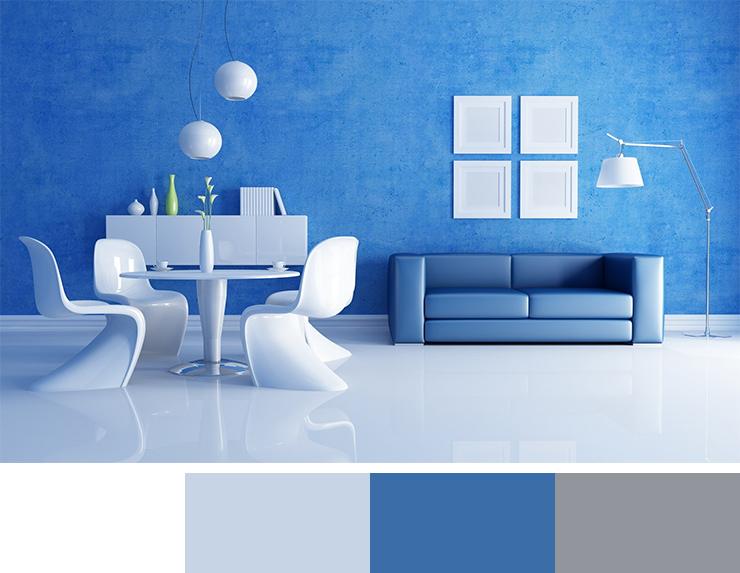Colors play a vital role in home décor and interior design. They can evoke certain moods and feelings, create a sense of balance and harmony, and set the tone for the overall aesthetic of a space. Whether you’re planning a complete remodel or just looking to freshen up a room, understanding the psychology of color can help you make more informed choices when it comes to selecting paint, fabrics, and other décor elements.

One of the most important things to keep in mind when working with color in home décor is that different hues can have very different effects on the human psyche. For example, warm colors like red and orange can create a sense of energy and excitement, while cool colors like blue and green tend to be more soothing and calming. This can be particularly useful when choosing colors for specific areas of the home, such as the living room or bedroom.
Warm colors
Warm colors like red, orange and yellow are perfect for creating a cozy and inviting atmosphere in living rooms and bedrooms. They are known for promoting feelings of warmth, comfort and cheerfulness. In addition, red can also be used to create a sense of drama and excitement. If you’re looking to create a more formal or sophisticated atmosphere, consider using deeper shades of red or pairing red with other rich colors like burgundy or maroon.

Cool colors
Cool colors like blue, green and purple are perfect for creating a serene and peaceful atmosphere in the home. They are known for promoting feelings of calmness, serenity and tranquility. Blue is particularly popular in bedrooms and bathrooms because of its soothing effect on the mind and body. If you’re looking to create a more modern or minimalist aesthetic, consider using pale shades of blue or pairing blue with other neutral colors like white or gray.

Neutral colors
Neutral colors like white, beige, gray, and black are perfect for creating a clean and sophisticated atmosphere in the home. They are known for promoting feelings of elegance, sophistication, and timelessness. Neutral colors are particularly popular in modern and minimalist design schemes, as they can help create a sense of balance and harmony in a space. They are also perfect for creating a backdrop for more bold and more colorful accents.

When it comes to selecting colors for home décor, it’s also important to consider the overall style and aesthetic of the space. For example, a traditional or classic design scheme might call for more muted and subdued colors, while a more modern or contemporary design scheme might incorporate bolder and brighter hues. Additionally, you’ll want to take into account any existing furniture, flooring, and other elements that you’re working with, as these can also influence your color choices.
Another important consideration when it comes to colors in home décor is the amount of natural light that a room receives. Rooms that receive a lot of natural light can handle bolder and brighter colors, while rooms that are more shaded or have less natural light might be better suited to more muted and subdued hues. Additionally, you’ll want to consider the orientation of a room – a room facing north will receive less natural light than a room facing south, for example.

As you’re selecting colors for your home décor, it can also be helpful to take a step back and consider the overall flow of the space. For example, if you’re working with an open floor plan, you’ll want to choose colors that complement one another and create a sense of continuity from one room to the next. Additionally, you’ll want to take into account any architectural elements or focal points in the space, such as a fireplace or a statement wall, and choose colors that will enhance these elements and make them stand out.
